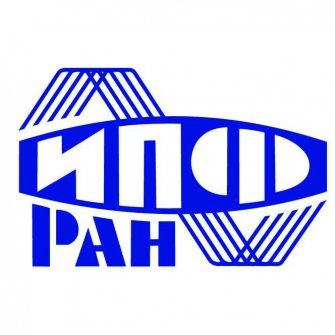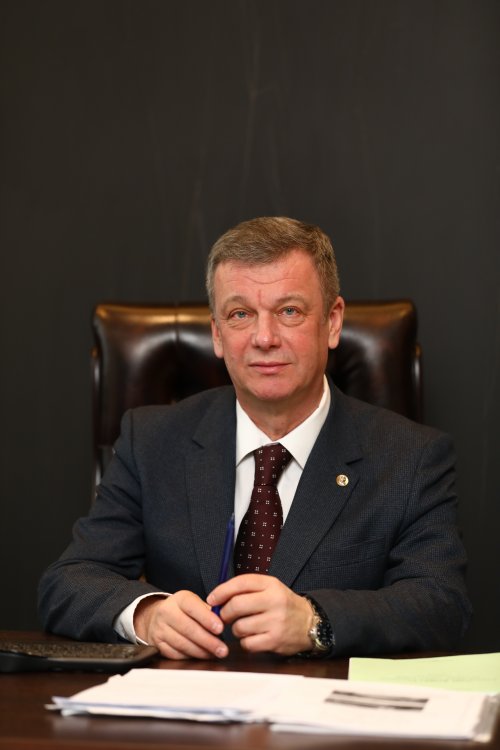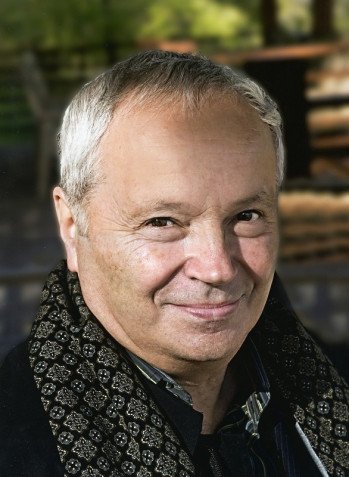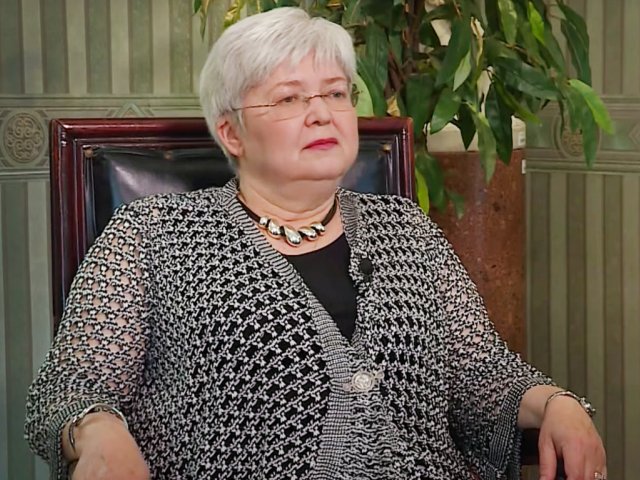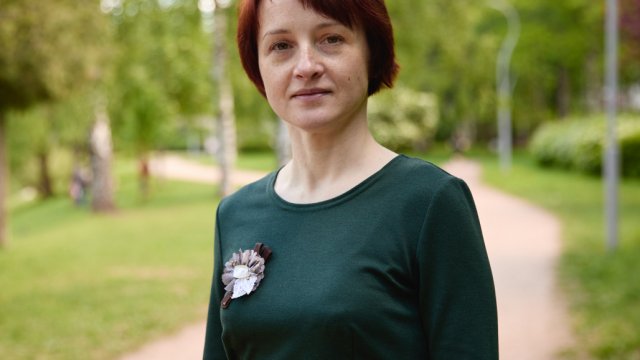The Federal State Budgetary Scientific Institution "Federal Research Center Institute of Applied Physics of the Russian Academy of Sciences" (IAP) was established based on several divisions of the Radiophysical Research Institute (NIRFI) of the Russian Ministry of Higher and Secondary Vocational Education in April 1977 as the Institute of Applied Physics of the Soviet Academy of Sciences. Major research directions are related to radiation physics, plasma physics, microwave electronics, hydrophysics, ocean acoustics, nonlinear dynamics, laser physics, nonlinear optics.
Powerful millimeter-range generators developed at IAP – known as gyrotrons – and the results they have enabled in studies of interaction of powerful electromagnetic radiation with plasma and matter have found wide application in controlled thermonuclear fusion installations and will drive the development of new technologies in physics of microwave discharge, plasma chemistry and material processing. The work of researchers at the Institute on boosting the power output of microwave sources has laid the foundations of microwave relativistic electronics – a dedicated direction in science.
Pioneering research by IAP scientists in the field of nonlinear acoustics has led to the development of new highly sensitive methods of nondestructive testing and flaw detection, low-frequency ocean acoustics, and the creation of integrated instrumentation for remote investigation of ocean processes and inhomogeneities in ocean waveguides. Advances in nonlinear and adaptive optics have served as the basis for the creation of powerful laser systems for various purposes, including femtosecond laser complexes of petawatt and terawatt power range.
Many modern radio-physical directions actively developed in the IAP are related to the tasks of remote diagnostics and tomography of various objects, including natural environments (astrophysical and geophysical plasmas, hydrosphere and Earth’s atmosphere, rocks on Earth), biological tissues, artificial materials and technical structures.
The Center has two branches in Nizhny Novgorod:
The Institute of Microstructural Physics of RAS and the Institute of Mechanical Engineering Problems of RAS.
The IAP has its own publishing house.
The Center boasts extensive experimentation assets and a large inventory of modern diagnostic tools, allowing to carry out both laboratory and natural-scale experiments.
Scientific research is provided by 1,997 people, including more than 650 scientists, among them 6 academics, 12 RAS associated fellows, 120 doctors and 325 candidates of sciences. The average age of researchers in IAP is 43 years. Over the many years the Institute has been in existence, many scientific awards and prizes have been bestowed in recognition of efforts by its team. These include the Lenin prize and state prizes, prizes of the Council of Ministers of the USSR and the Government of the Russian Federation, prizes of the Communist Youth and the State Prize of the Russian Federation awarded to young scientists for outstanding works in the field of science and technology, the Grand Gold Medal of the RAS named after M. V. Lomonosov, RAS prizes in the name of outstanding scientists, medals awarded by RAS with monetary rewards to young scientists, as well as a number of prestigious international prizes and medals.
For many years IAP has organized well-known regular conferences and scientific schools around the world. An entire “belt” of smaller knowledge-intensive enterprises has sprung up around the Center with the key goal of advancing scientific IAP’s findings into actual samples and prototypes, analyzing the market and enabling commercial sale of knowledge-intensive products. At IAP there is an expansive training system for scientific personnel in physics, a system of multilevel, continuous education, with three doctoral dissertation councils in operation.
The Federal State Budgetary Institution of Science, Research Center “the Institute of Applied Physics of the Russian Academy of Sciences” is headed by the Director, academic of RAS Grigory Denisov.
Grigory Denisov is widely known in Russia and abroad for his theoretical and experimental works on electrodynamics of multimodal systems and power electronics. He is the author of more than 350 scientific works, 6 author certificates and patents (Hirsch index 32, more than 4000 citations).
In these areas Grigory Denisov carried out several basic research works, positing and developing fundamentally new methods of diagnostics and transformation of spatial structures of powerful wave flows as well as new varieties of powerful electronic microwave devices.
The works of Gregory Denisov made a decisive contribution to the successful development of highly demanded innovative microwave devices with unprecedented properties: megawatt gyrotrons for controlled fusion units, gyro-traveling wave tubes of millimeter wavelengths with a wide band of amplified frequencies, free electron-based masers. The results of his research are also highly relevant for the development of promising setups that would enable studies of new methods of microwave processing of materials, the creation of new multi-charge ion sources and the cultivation of diamond films using the CVD technology.
The achievements of the scientist were recognized with the Communist Youth Prize for the Achievements in the Field of Science (1986), the David J. Rose International Prize for Excellence in Fusion Engineering (1997), the State Prize of the Russian Federation for Achievements in the Field of Science and Technology (2003), the Prize of the Government of Russia for the Development of Controlled Fusion Installations (2011).
Gregory Gennadyevich Denisov heads the scientific school, "Generation, strengthening, transformation and transportation of high-power microwave and terahertz radiation for the purpose of its application in physical and technological research," which numbers about 40 scientists, including 8 doctors and 14 candidates of sciences. The school has received numerous grants under the program of the President of the Russian Federation on state support of leading scientific schools.
The scientific head of the IAP, Alexander Georgievich Litvak, is an academician of RAS, a member of the Presidium of the Russian Academy of Sciences and a member of the Bureau of the Department of Physical Sciences of RAS
Alexander Litvak has been working at the Institute of Applied Physics from the day of its foundation (1977), first heading a sector, followed by a laboratory and the Department of Plasma Physics (1988) before being elected the same year the Director of the Department of Plasma Physics and Power Electronics. Between 2003-2015 he was the Director of the Institute of Applied Physics of RAS. From 2009 to 2015, he chaired the Nizhny Novgorod Scientific Center of RAS.
The research of Alexander Litvak covers a wide range of problems: interaction of high-power electromagnetic radiation with matter, development and creation of dense plasma sources, development of microwave methods of plasma heating in controlled fusion installations, development of high-power microwave radiation sources and their use for new technology research, as well as for the improvement of national defense capabilities. Alexander Litvak is the author of more than 300 scientific papers.
The researcher carries out extensive work on the coordination of scientific research at the Institute and the establishment of effective scientific and production ties with leading scientific centers and industrial enterprises in Russia and abroad. The problems of innovative product adoption are being solved successfully under his leadership. Alexander Litvak heads one of the largest innovative firms in the region, GYCOM Research and Production Company (http://www.gycom.ru). The company is a recognized global leader in the field of production of high-power millimeter-range drivers and amplifiers. Promising innovative high-tech projects are pursued both in-house at the IAP and by the companies in the “innovation belt” of the Institute, which in addition to GYCOM includes a dozen of small enterprises, successfully working on the international market.
A. G. Litvak carries out scientific, organizational and social work. He is a member of the board of the Russian Foundation for Basic Research, the chairman and member of steering committees and program committees of numerous international scientific conferences and meetings, a member of editorial boards of several international and Russian scientific journals, and member of scientific councils. With the direct participation of Alexander Litvak, the Council for Science was established under the Governor of the Nizhny Novgorod region, of which he is the deputy chairman. Since 2009 Alexander Litvak has been Chairman of the Commission for the Development of Science, Education and Culture of the Public Chamber of the Nizhny Novgorod Oblast. At his behest and under the auspices of the Nizhny Novgorod Scientific Center of RAS (http://www.nncras.ru), the Znanie-NN scientific and educational center (http: //www.znanienn.ru) opened its doors in 2011.
Academician Alexander Litvak holds the USSR State Prize for Science and Technology (1987), the Prize
of the Government of the Russian Federation in the field of science and technology (2012), the Kenneth J. Button international prize and medal "for an outstanding contribution to the electromagnetic wave science" (2008), and the EPS plasma physics innovation prize awarded in 2011 by the European Physics Society. State awards of A.G. Litvak include the Order of Friendship (2004) and 4th Degree Order for Merit to the Fatherland (2010).
